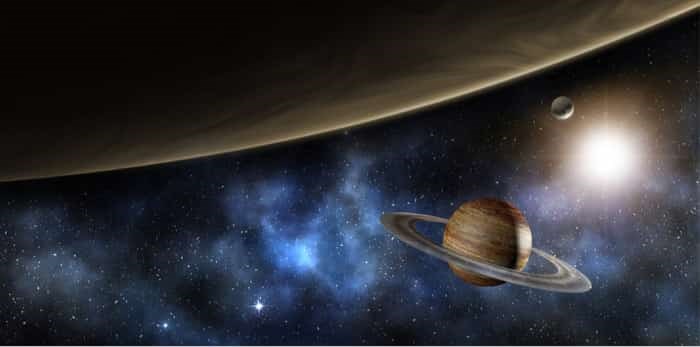 Photo: Jupiter, saturn and the milky way – 3d illustration-element of this image furnished by NASA / Shutterstock
Photo: Jupiter, saturn and the milky way – 3d illustration-element of this image furnished by NASA / Shutterstock
While there are a number of places to stargaze in the Lower Mainland, there's nothing quite like viewing the wonders of the universe through a powerful telescope.
Don't have a colossal telescope at your disposal?
No problem: The H.R. MacMillan Space Centre's Gordon MacMillan Southam Observatory features a 1/2 metre Cassegrain telescope that allows guests to observe everything from planets to moons to stars and much more.
Vancouver Is Awesome spoke to Kat kelly, Astronomer, H.R. MacMillan Space Centre, about what guests may expect to see through the centre's telescope.
"Saturn and Jupiter are two of our most popular sightings. Not only are both planets beautiful, but guests may also spot several moons around each of them," she explains.
While Earth only has one moon, these mammoth planets have a multitude of moons orbiting their celestial bodies. In fact, Kelly notes that Saturn has a whopping 63 moons while Jupiter has a jaw-dropping 79.
"Of course, we can't see all of these moons through our telescope, but several of them are visible," she describes. "With that being said, these two planets are very captivating. Saturn glows with yellow-white and blue shades and even appears three dimensional. Viewers may also observe its rings."
In contrast, Kelly explained that Jupiter's rings are too thin to see through the telescope. With this in mind, she adds that the planet has striking bands and stripes that wrap around its pale orange and red body.
In addition, Kelly states that guests will also be able to view distant stars, Mars, and even nebulas. The nebulas appear like grey wisps in the sky, or kind of like 'space clouds.'
The viewings usually begin by locating the moon, and the Observatory is open Saturday nights from 7:30 p.m. to 11:30 p.m. Admission is by donation.
https://www.instagram.com/p/Bw-C2-9AtzN/
https://www.instagram.com/p/BmRP-c2FOW1/
The H.R. MacMillan Space Centre is located at 1100 Chestnut Street in Vancouver and is open daily from 10 a.m. until 5 p.m.


